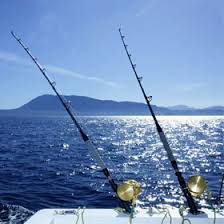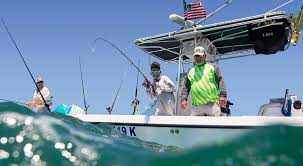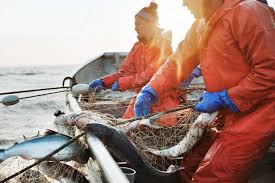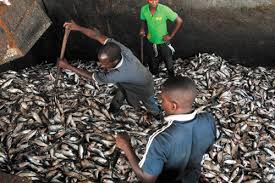Fisheries play a crucial role in global food security, economic development, and the sustainability of aquatic ecosystems. The two primary types of fisheries are inland and marine fisheries, each with distinct characteristics, practices, and challenges.
Understanding these types is essential for effective management and conservation efforts, as well as for supporting the livelihoods of millions of people who rely on fishing as a source of income and sustenance.
Inland fisheries refer to fishing activities that take place in freshwater bodies such as rivers, lakes, ponds, and reservoirs. These fisheries are vital for communities living near these water sources, providing not only food but also employment and cultural significance.
Inland fisheries support diverse species of fish, including popular species like tilapia, catfish, and carp. They can vary greatly in scale, from small-scale subsistence fishing practiced by local communities to larger commercial operations.
However, inland fisheries often face significant pressures from overfishing, pollution, habitat destruction, and climate change. Sustainable management practices, such as implementing fishing quotas and restoring aquatic habitats, are essential to maintaining healthy fish populations and ensuring the long-term viability of these fisheries.
On the other hand, marine fisheries involve fishing activities conducted in saltwater environments, including oceans, seas, and coastal areas. Marine fisheries are generally larger in scale and often involve more complex and industrialized operations compared to inland fisheries.
They are responsible for a substantial portion of the world’s fish production, with species such as tuna, cod, and shrimp being highly sought after in global markets. Marine fisheries are critical for food security, providing protein and nutrients to millions of people worldwide.
However, these fisheries are also facing numerous challenges, including overfishing, bycatch, habitat degradation, and the impacts of climate change, such as ocean acidification and rising sea temperatures. Effective management strategies, including the establishment of marine protected areas and the implementation of sustainable fishing practices, are vital for protecting marine ecosystems and ensuring the long-term health of fish populations.
Both inland and marine fisheries contribute to the livelihoods of millions of people, particularly in developing countries, where fishing is a primary source of income for many communities. These fisheries also support local economies, create jobs, and contribute to cultural traditions.
However, the sustainability of both types of fisheries is increasingly at risk due to human activities and environmental changes. As demand for fish continues to rise, there is a pressing need for effective management strategies that balance the economic benefits of fishing with the need to protect aquatic ecosystems.
Overview of Fishing Techniques

Fishing techniques vary based on location, target species, and desired outcomes. Here are some common methods:
1. Hook and Line Fishing: A traditional method where fishermen use a rod, reel, and baited hook to catch fish. This technique is versatile and can be used in both freshwater and saltwater.
2. Trawling: Involves dragging a large net through the water to catch fish. Trawling can be conducted at various depths and is effective for capturing schools of fish.
3. Net Fishing: Fishermen use nets to catch fish. This technique includes gillnets, seine nets, and cast nets, each designed for specific fishing conditions and target species.
4. Spearfishing: A method that involves using a spear or harpoon to catch fish. This technique is often used by free divers and is popular for catching larger fish species.
5. Trap Fishing: Fishermen use traps or pots to catch fish or crustaceans. This method allows for a selective catch and minimizes bycatch, making it environmentally friendly.
Types of Marine Fisheries
Marine fisheries are vital for global food security and economic development. They can be categorized into several types:
1. Commercial Fisheries: These fisheries focus on catching fish for sale in markets. Commercial fisheries operate on a large scale, targeting various species such as tuna, cod, and shrimp.
2. Artisanal Fisheries: Small-scale, often subsistence-oriented fisheries. Artisanal fishers typically use traditional methods and equipment, providing food and income for local communities.
3. Recreational Fisheries: Fishing for pleasure rather than for profit. Recreational fisheries can involve both freshwater and saltwater fishing and may contribute to local economies through tourism.
4. Aquaculture: The farming of fish and other aquatic organisms in controlled environments. Aquaculture has become increasingly important for supplementing wild fish stocks and providing seafood.
5. Pelagic Fisheries: Target fish species that live in the open water column, such as tuna and mackerel. These fisheries often require specialized equipment for deep-sea fishing.
6. Demersal Fisheries: Focus on fish that live near the seabed, such as flatfish and cod. Demersal fishing often involves trawling or longlining techniques.
Types of Inland Fisheries
Inland fisheries are crucial for local communities and ecosystems. Here are the main types:
1. River Fisheries: Involves fishing in rivers and streams. River fisheries provide important habitats for many fish species and support both commercial and recreational fishing.
2. Lake Fisheries: These fisheries focus on fishing in freshwater lakes. Lakes can support diverse fish populations and are often popular for recreational fishing.
3. Pond Fisheries: Involves farming fish in controlled pond environments. Pond fisheries can be a sustainable way to produce fish for local consumption and are common in aquaculture.
4. Reservoir Fisheries: These are fisheries in man-made lakes created by damming rivers. Reservoir fisheries can provide significant recreational opportunities and contribute to local economies.
5. Wetland Fisheries: Includes fishing in marshes and swamps. Wetlands are rich in biodiversity and can support various fish and aquatic species.
Capture Fisheries
Capture fisheries involve harvesting wild fish and other aquatic organisms from their natural habitats. Here are some key points:
1. Definition: Capture fisheries refer to the process of catching fish and seafood from oceans, rivers, lakes, and other bodies of water.
2. Methods: Common methods include trawling, gillnetting, longlining, and hand fishing. The choice of method depends on the target species and the fishing environment.
3. Sustainability: Sustainable practices are essential in capture fisheries to prevent overfishing and maintain fish populations. Regulations and quotas are often implemented to manage fish stocks.
4. Impact on Ecosystems: Overfishing and bycatch can significantly affect marine and freshwater ecosystems. Responsible management is critical for the health of aquatic environments.
Commercial Fisheries
Commercial fisheries focus on catching fish and seafood for sale and profit. Here’s what you should know:
1. Purpose: The primary goal is to harvest fish and seafood for commercial distribution and consumption, contributing significantly to the economy.
2. Scale: Commercial fisheries can vary in scale, from small local operations to large industrial fleets.
3. Impact on Communities: These fisheries provide jobs and income for many coastal and inland communities, often forming the backbone of local economies.
4. Challenges: Commercial fisheries face challenges such as market fluctuations, regulatory pressures, and competition with aquaculture.
Read Also: African Swine Fever: Description, Damages Caused, Control and Preventive Measures
Recreational Fisheries

Recreational fisheries involve fishing for pleasure or sport rather than for profit. Here are some key aspects:
1. Definition: Recreational fishing is done primarily for enjoyment, relaxation, or competition, with anglers catching fish for personal use or sport.
2. Equipment: Anglers typically use rods, reels, bait, and tackle. The focus is on the experience rather than the quantity of fish caught.
3. Conservation Efforts: Recreational fishing often promotes conservation practices, such as catch-and-release, to help sustain fish populations and protect aquatic ecosystems.
4. Economic Contribution: Recreational fisheries contribute to local economies through tourism, equipment sales, and associated services.
Small-Scale Fisheries
Small-scale fisheries are community-based operations that play a vital role in food security and livelihoods. Here’s what to know:
1. Definition: These fisheries are characterized by small boats, limited technology, and local fishing practices. They often target nearshore resources.
2. Socioeconomic Importance: Small-scale fisheries provide food, employment, and income for millions of people, particularly in developing countries.
3. Sustainable Practices: Many small-scale fishers employ sustainable practices, relying on traditional knowledge and community-based management.
4. Vulnerability: Small-scale fisheries are often more vulnerable to environmental changes and overfishing due to their reliance on specific species and local ecosystems.
Industrial Fisheries
Industrial fisheries are large-scale operations that utilize advanced technology and equipment for harvesting fish. Here’s an overview:
1. Definition: These fisheries are characterized by large vessels, high-capacity gear, and a focus on maximizing production and efficiency.
2. Global Impact: Industrial fisheries often target high-volume species, contributing significantly to global seafood supplies but also raising concerns about overfishing and bycatch.
3. Technological Innovations: Advances in technology, such as sonar and automated processing, have increased the efficiency of industrial fishing operations.
4. Regulatory Challenges: Industrial fisheries face scrutiny over their environmental impact, leading to regulations aimed at promoting sustainability and reducing negative effects on ecosystems.
Sustainable Fishing Practices
Implementing sustainable fishing practices is crucial for ensuring the long-term viability of fish populations and their habitats. Key practices include:
1. Selective Fishing Gear: Using gear that minimizes bycatch helps protect non-target species and ensures that juvenile fish can grow to maturity. Consider using circle hooks or mesh nets with larger openings to allow smaller fish to escape.
2. Fishing Quotas: Establishing catch limits based on scientific assessments helps prevent overfishing. Fisheries should work with scientists to determine sustainable quotas that maintain fish populations at healthy levels.
3. Seasonal Closures: Implementing seasonal closures during breeding seasons allows fish populations to reproduce and replenish. This practice helps maintain healthy stock levels for future generations.
4. Habitat Protection: Protecting critical habitats, such as spawning grounds and coral reefs, is essential for the sustainability of fish populations. Designating marine protected areas can help safeguard these vital ecosystems.
5. Certification Programs: Participating in certification programs, such as the Marine Stewardship Council (MSC), ensures that fishing practices meet sustainability standards. This provides consumers with assurance that their seafood choices are environmentally responsible.
Read Also: 15 Medicinal Health Benefits Of Comfrey (Symphytum officinale)
Fisheries Management and Regulations

Effective fisheries management and regulations are vital for ensuring the sustainability of fish populations. Important aspects include:
1. Data Collection and Research: Gathering data on fish populations, fishing practices, and ecosystem health is crucial for informed decision-making. Ongoing research helps managers assess the status of fisheries and adjust regulations as needed.
2. Collaborative Management: Engaging stakeholders, including fishermen, conservationists, and scientists, in the management process fosters cooperation and improves compliance with regulations. Collaborative approaches can lead to more effective solutions.
3. Enforcement of Regulations: Strong enforcement of fisheries regulations is essential for preventing illegal, unreported, and unregulated (IUU) fishing. This includes monitoring fishing activities and penalizing violators to protect fish populations.
4. Ecosystem-Based Management: Adopting an ecosystem-based approach considers the interconnections between fish species and their habitats. This holistic perspective helps ensure that management strategies support the overall health of marine ecosystems.
5. Adaptive Management: Implementing adaptive management strategies allows fisheries managers to respond to changing conditions and new information. This flexibility is important for addressing emerging challenges in fisheries management.
Impacts of Fisheries on Ecosystems
Fishing activities can significantly impact marine ecosystems. Key impacts include:
1. Overfishing: Overfishing can lead to the depletion of fish populations, disrupting the balance of marine ecosystems. The loss of key species can have cascading effects on the food web and overall ecosystem health.
2. Habitat Destruction: Certain fishing practices, such as bottom trawling, can cause severe damage to marine habitats. Protecting critical habitats is essential for maintaining biodiversity and ecosystem functioning.
3. Bycatch: Bycatch refers to the unintended capture of non-target species during fishing. High levels of bycatch can threaten vulnerable species, including seabirds, marine mammals, and juvenile fish.
4. Pollution: Fishing operations can contribute to pollution through discarded gear, fuel spills, and waste. Reducing pollution from fisheries is crucial for protecting marine environments.
5. Climate Change: Fisheries are also affected by climate change, which alters ocean temperatures, currents, and habitats. Understanding these impacts is essential for adapting fisheries management practices to changing conditions.
Do you have any questions, suggestions, or contributions? If so, please feel free to use the comment box below to share your thoughts. We also encourage you to kindly share this information with others who might benefit from it. Since we can’t reach everyone at once, we truly appreciate your help in spreading the word. Thank you so much for your support and for sharing!
Read Also: How to Build a Raised Bed Garden
Frequently Asked Questions
We will update this section soon.

